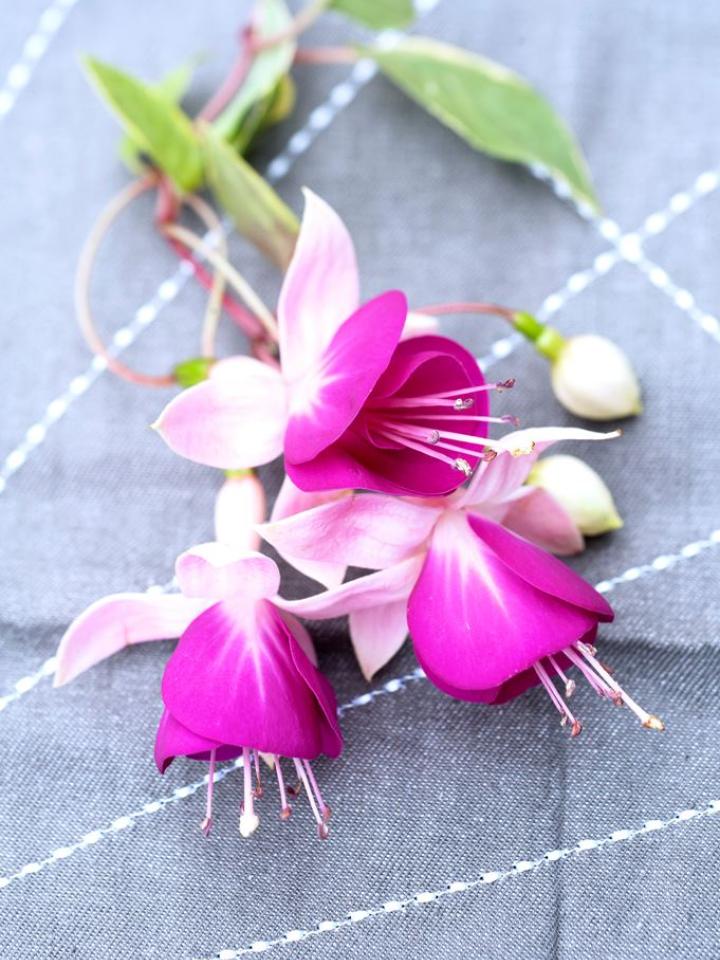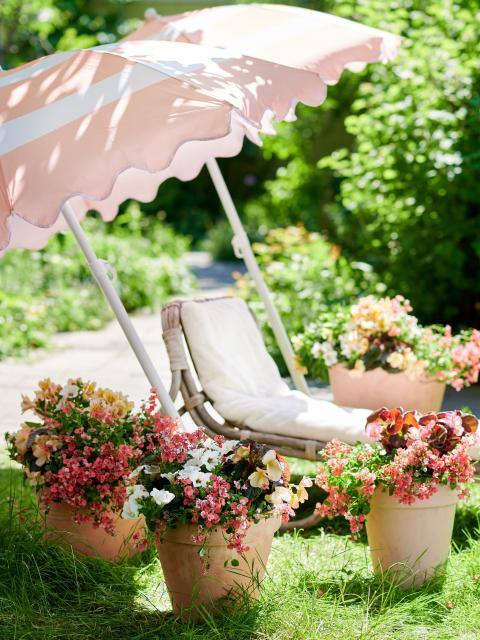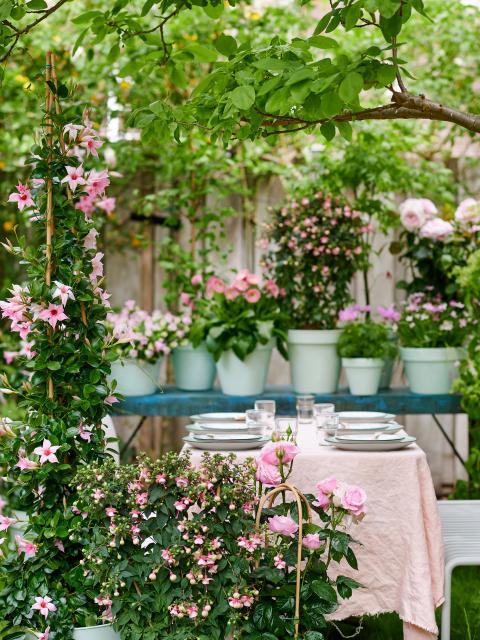COLOURS AND SHAPES
It's almost unimaginable that such beautiful flowers can emerge from woody twigs. The fuchsia begins as a bell (hence the popular name bubble plant) and opens as a bell. That bell then usually develops another skirt from which long sprites emerge. The undersides of those sprites are slightly thicker, as if attached to pointe shoes, which makes each flower look a bit like a ballerina. The colours are brilliant: bright pink and deep purple are most common, but there are also red and yellow fuchsias. This garden bloomer is available from April to June in a variety of forms, such as on a stem, bush or hanging plant. The plant blooms endlessly, often well into autumn, when the flowers turn into berries.
ORIGIN
The fuchsia is a member of the primrose family and is mainly native to South America. About 110 species are known, some of which also grow in New Zealand and Tahiti. In the wild, the shrubs can grow as tall as 4 metres; the family also includes a New Zealand tree that reaches 15 metres. The plant has been known in Europe since the late 18th century.
TRIVIA
- The fuchsia was first described in 1703 by Charles Plumier, who named the plant after the German botanist Leonhart Fuchs (1501-1566), whom he greatly admired.
- In New Zealand, the Maori use the berries of the fuchsia to apply war colours to their faces.
- In ayurveda, the fuchsia is linked to the crown chakra.
- In floral language, the fuchsia represents abundance.








